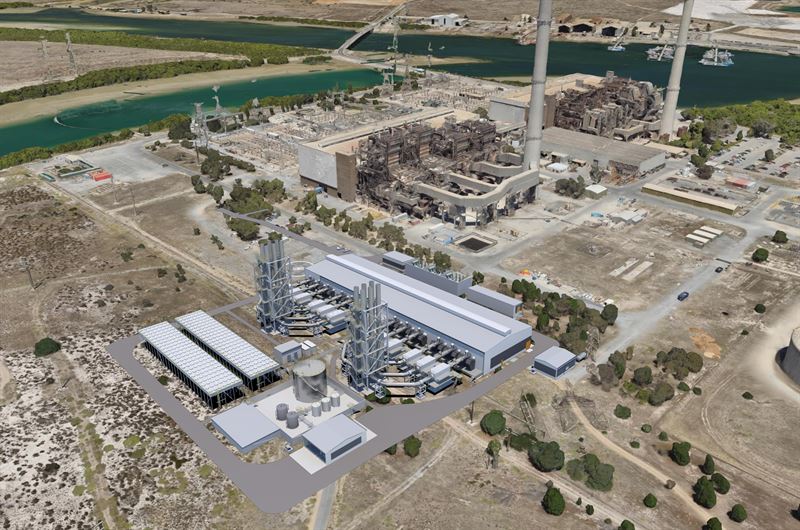The $295 million, 210 MW, AGL Barker Inlet Power Station (the Station) is billed as a crutch upon which the energy transition can lean. The Station is Australia’s first new fossil-fuel power plant since 2012.
South Australia is leading the way in the renewable energy transition, and considering its recent history, it is probably wise that the state is not going cold turkey. Rather, South Australia is betting on renewables and looking to secure that investment against stalking detractors ready to pounce.
The Station’s fast-start operation allows it to reach full-capacity within five minutes, ensuring it can respond to peaks and troughs in demand rapidly.
“South Australia is leading the nation in the transition to renewable energy and the Barker Inlet Power Station will have an important role in producing more affordable, reliable and cleaner electricity,” said South Australian Energy Minister Dan van Holst Pellekaan at the site’s launch.
“AGL’s investment is good news for the affordability and reliability of electricity supplies in South Australia,” continued Pellekaan. “Modern fast start gas generators burn less gas and provide supply when renewables can’t, meaning lower cost, lower emissions and greater reliability.”
Last year the Australian Energy Market Operator (AEMO) projected Australia to have 73% renewable power by 2020/21 and consultants Green Energy Markets found it could reach 74% by 2025 with current policy. Late last month South Australia set a new record for minimum operational demand at 475 MW as rooftop solar led the way by covering a staggering 64% of total demand.
South Australia’s target of “net” 100% renewables by 2030 remains a firm ambition of both government and people. Polling by the Australia Institute earlier this year showed that almost 70% of South Australian voters want to see the state transition to 100% renewables by 2030. However, it is not difficult to imagine such a renewable mandate deteriorating if those 70% of South Australians find themselves suddenly without power due to unforeseen circumstances brought about by the rapidity of the energy transition.
AGL chief executive Brett Redman spoke to the importance of the Barker Inlet Power Station to the state’s energy mix, noting that the new investment will help phase out the existing turbines with efficient technology that produces less greenhouse gas per unit of electricity generated.
“AGL is proud to be the only company in the market to have built a major dispatchable power station since 2012, and the new power station provides the firming capacity the market needs,” said Redman. “AGL’s new power station will provide more affordable, reliable and cleaner energy for South Australian homes and businesses.”
On the Station’s rapid-response capability, Redman noted that it would allow the Barker Inlet Power Station to respond “to changes in renewable generation supply and demand – particularly wind generation here in South Australia.”
Federal Minister for Energy and Emissions Reduction Angus Taylor, who attended the opening as a break from his busy schedule of avoiding solar and wind project launches, also spoke to the Station’s firming capability, “ensuring the lights stay on when solar and wind supply decreases.”
According to the Grattan Institute, a public policy think tank, Australia needs approximately $400 billion in new utility-scale generation assets over the coming decades to cover the retirements of coal-fired power plants as the nation progresses in the energy transition. However, Grattan Institute has also released report echoing the common sentiment that policy uncertainty at the federal level is hindering investment.
This content is protected by copyright and may not be reused. If you want to cooperate with us and would like to reuse some of our content, please contact: editors@pv-magazine.com.









By submitting this form you agree to pv magazine using your data for the purposes of publishing your comment.
Your personal data will only be disclosed or otherwise transmitted to third parties for the purposes of spam filtering or if this is necessary for technical maintenance of the website. Any other transfer to third parties will not take place unless this is justified on the basis of applicable data protection regulations or if pv magazine is legally obliged to do so.
You may revoke this consent at any time with effect for the future, in which case your personal data will be deleted immediately. Otherwise, your data will be deleted if pv magazine has processed your request or the purpose of data storage is fulfilled.
Further information on data privacy can be found in our Data Protection Policy.